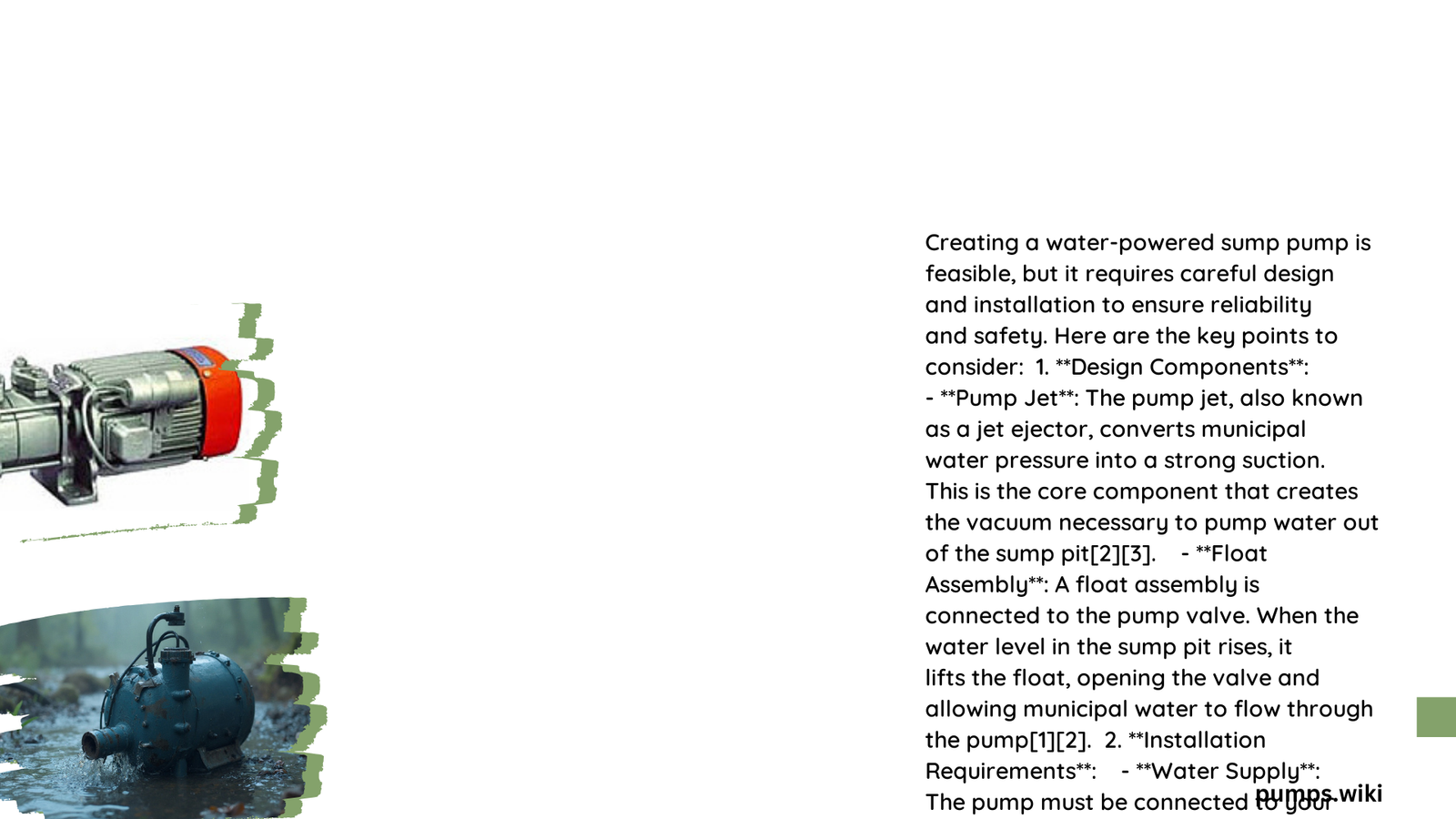Water-powered sump pumps offer an innovative solution for basement water management, utilizing municipal water pressure to remove excess groundwater without electricity. Homeowners can indeed create a functional water-powered sump pump by understanding critical components, pressure requirements, and installation techniques. This comprehensive guide will walk you through the entire process of designing and implementing your own water-powered sump pump system.
What Components Do I Need for a Water Powered Sump Pump?
Creating a water-powered sump pump requires specific components that work together to efficiently remove water from your basement. Here’s a detailed breakdown:
Essential Components List
- 3/4″ NPT water inlet connection
- Ejector jet or specialized nozzle
- Vertical float switch
- PVC suction and discharge pipes
- Check valve
- Backflow preventer
Component Specifications Table
| Component | Specification | Purpose |
|---|---|---|
| Water Inlet | 3/4″ NPT | Connects to municipal water supply |
| Ejector Jet | 20-100 PSI compatible | Creates vacuum for water removal |
| Float Switch | Vertical design | Automates pump operation |
| Discharge Pipe | 1-1/2″ diameter | Carries water away from foundation |
How Much Water Can a DIY Water Powered Sump Pump Handle?

A well-designed water-powered sump pump can typically manage:
– 500-1500 gallons per hour (GPH)
– Lift heights around 10-15 feet
– Operates effectively at 60 PSI municipal water pressure
Efficiency Factors
- Water pressure consistency
- Proper nozzle and jet design
- Correct float switch calibration
- Minimal pipe resistance
What Are the Installation Challenges?
While creating a water-powered sump pump is feasible, several challenges exist:
Technical Challenges
- Precise water supply connection
- Potential need for professional plumbing assistance
- Ensuring proper vacuum creation
- Maintaining consistent water pressure
Cost Considerations
- Estimated project cost: $100-$300
- Potential additional plumbing expenses
- Long-term water usage implications
What Tools Will I Need?
Recommended tools for your DIY water-powered sump pump project:
– PVC pipe cutter
– Adjustable wrench
– Teflon tape
– Pipe threading tools
– Measuring tape
– Level
– Safety glasses
– Pipe sealant
How Do I Test My Water Powered Sump Pump?
Testing is crucial to ensure proper functionality:
1. Check all connections for leaks
2. Verify float switch operation
3. Measure water removal rate
4. Monitor system performance during simulated flooding
5. Inspect discharge pipe for proper water flow
Pro Tips for Successful Implementation
- Consult local building codes
- Consider professional consultation
- Use high-quality, corrosion-resistant materials
- Perform regular maintenance checks
- Install a backup electrical sump pump
Maintenance and Longevity
Water-powered sump pumps generally require minimal maintenance due to:
– No moving mechanical parts
– Simplified design
– Reliance on water pressure
– Self-cleaning mechanism
Annual Maintenance Checklist
- Inspect water inlet connection
- Check float switch functionality
- Clear any debris from suction screen
- Verify discharge pipe alignment
- Test system performance
Conclusion
Creating a water-powered sump pump is achievable with proper planning, understanding of components, and careful implementation. While challenges exist, the potential benefits of an alternative water removal system make this a worthwhile project for proactive homeowners.
